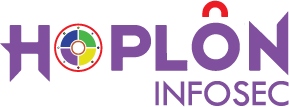Health insurers and healthcare organizations are under siege from cybercriminals seeking to exploit vast troves of sensitive patient data. The blog is about why Endpoint Security is important for Health Insurance. In 2024 alone, the U.S. experienced 725 major healthcare data breaches impacting 275 million records. Ransomware while accounting for just 11% of incidents was responsible for 69% of records exposed.
Europe is not immune; the breach of French firms Viamedis and Almerys compromised the data of 33 million individuals. These examples highlight how a single vulnerable endpoint can cascade into massive disruptions and data leaks. In response, this guide explores how endpoint attacks happen, their risks, real-world case studies, regulatory expectations (HIPAA/GDPR), and best practices to prevent and respond to these incidents.
The Growing Threat to Health Insurance Data
Health Insurances has become a goldmine for cybercriminals. Sensitive personal data, including Social Security numbers, health histories, and financial details, fetches high prices on the black market. Health insurers like UnitedHealth, which processes 15 billion transactions annually, present an enormous attack surface. The stakes are high: a sophisticated attack on an insurer or clearinghouse can cripple core functions like claims, prescriptions, and eligibility checks.
Data breaches are surging in volume and impact. The 275 million records breached in 2024 represent a 63.5% increase from 2023. IBM pegged the average cost of a healthcare breach in the U.S. at $10.93 million, more than double the global average. From 2010 to 2024, ransomware alone exposed 285 million records. These figures underscore that endpoint vulnerabilities are not just technical oversights they’re critical risks to patient care and business continuity.
How Endpoint Attacks Occur in Healthcare and Security is Needed
Endpoints are the gateways to healthcare networks. Attackers exploit them through various means:
- Phishing & Social Engineering: Healthcare workers are prime targets. Attackers impersonate colleagues or vendors to trick staff into clicking malicious links or downloading malware.
- Malware & Ransomware: Introduced through unpatched vulnerabilities or malicious websites, these attacks allow criminals to encrypt data and demand a ransom.
- Unpatched IoT & Legacy Devices: Many medical devices run outdated software. Over 50% of IoT devices have known vulnerabilities. Once compromised, these devices become footholds for deeper network infiltration.
- Insider Threats: Employees intentionally or accidentally can leak data. Lost or unsecured devices also present significant risks.
- Distributed Denial of Service (DDoS): While not focused on data theft, these attacks can shut down registration systems and communication tools, hindering care delivery.
Every endpoint whether a laptop, phone, or insulin pump is a potential entry point. Attackers often use one compromised device to pivot across the network, accessing sensitive databases and administrative tools. Hence endpoint security for health insurance is important.
The Medical IoT Dilemma and Endpoind Security Failures
Medical Internet of Things (IoT) devices like heart monitors, infusion pumps, and wearable health trackers are especially vulnerable. They continuously transmit sensitive data and often lack robust security protocols. A 123% year-over-year increase in attacks on medical devices reflects their growing role in endpoint security failures. Any compromised device in this ecosystem can be a launchpad for broader breaches.
Case Studies That Illustrate the Stakes of Health Industries
- Change Healthcare/UnitedHealth (U.S., 2024): The ALPHV/BlackCat ransomware gang encrypted critical systems, halting claims and prescriptions nationwide. Hospitals reported delayed care and financial losses, with 33% losing over half their revenue. Up to one-third of Americans may have had data exposed.
- Viamedis and Almerys (France, 2024): A breach at these health payment firms affected 33 million people, half of France’s population. Though no banking data was stolen, the personal data leaked could facilitate identity theft and fraud.
These incidents show how a single vulnerable endpoint in a vendor’s network can trigger nationwide disruptions.
Consequences of Endpoint Breaches If you not aware about Security for Health Insurance
- Patient Safety Risks: Delays in care authorizations and medical errors become real threats when systems go down.
- Financial Damage: Direct losses, fines, and remediation expenses are immense. Healthcare breaches are the most expensive of any industry.
- Regulatory Penalties: HIPAA can impose up to $1.5M per violation. GDPR fines reach €20M or 4% of global turnover.
- Insurance Rate Hikes: Insurers hit by breaches may face higher premiums and stricter underwriting, ultimately passing costs to policyholders.
- Erosion of Trust: Repeated breaches shake public confidence in healthcare systems and insurers.
Legal and Regulatory Requirements
- HIPAA (U.S.): Mandates technical safeguards like encryption, audit controls, and access management. Covered entities must conduct regular risk assessments.
- GDPR (EU): Requires “appropriate technical and organizational measures,” including data encryption and breach notification. Regulators expect strong endpoint protections for healthcare data.
Both frameworks emphasize that endpoint vulnerabilities are a compliance failure, not just an IT issue.
Best Practices for Endpoint Security in Healthcare Insurance
Technology Measures:
- Unified Endpoint Protection (EPP/EDR): Deploy advanced antivirus and detection solutions on all devices.
- Network Segmentation: Separate IoT networks from core business systems. Use Zero Trust models to authenticate every connection.
- Patching and Device Management: Maintain an accurate inventory and enforce timely software updates. Disable unused ports and default credentials.
- Encryption & Backups: Encrypt devices and ensure critical data is backed up securely and offline.
- Threat Monitoring: Use SIEM and managed detection (MDR/XDR) for 24/7 anomaly detection.
- Secure Access: Enforce MFA on all remote systems and log privileged access.
Process and Policy Recommendations:
- Staff Training: Conduct regular phishing simulations and awareness programs.
- Vendor Risk Management: Assess third-party security practices. Require evidence of compliance.
- Incident Response Planning: Maintain a tested plan with clear roles, communication steps, and recovery protocols.
- Compliance Audits: Regularly audit against HIPAA and GDPR requirements.
Roles and Responsibilities:
- Executives/CISOs: Set the strategic tone for security. Set budget for endpoint protections.
- IT Teams/MSPs: Ensure security tools are deployed and monitored effectively.
- Vendors: Build secure products and patch vulnerabilities rapidly.
- Policyholders/Providers: Use strong passwords, avoid public Wi-Fi, and report suspicious activity.
Key Statistics
- 25% of U.S. cyberattacks targeted healthcare in 2024
- 725 major breaches affected 275M records
- $10.93M average cost per U.S. healthcare breach
- Over 50% of IoT devices have critical vulnerabilities
- 33% of hospitals in the Change Healthcare incident lost half of their revenue
Endpoint security for health insurance is no longer optional nowadays. It’s a frontline defense in the healthcare industry’s digital transformation. With attacks increasing in frequency and severity, proactive strategies are critical. Stakeholders must embed security into every layer of their operations, from laptops and IoT devices to third-party vendor ecosystems. Regulators are watching closely, and patients’ lives depend on resilient, secure systems. By adopting a comprehensive approach to endpoint protection, the health insurance sector can prevent disruptions, preserve trust, and protect the future of healthcare delivery.
Sources: Data and insights throughout this report are drawn from AHA, ISACA, IBM Security, HIPAA Journal, GDPR Info, BleepingComputer, TechXplore, and other leading cybersecurity and healthcare sources.




